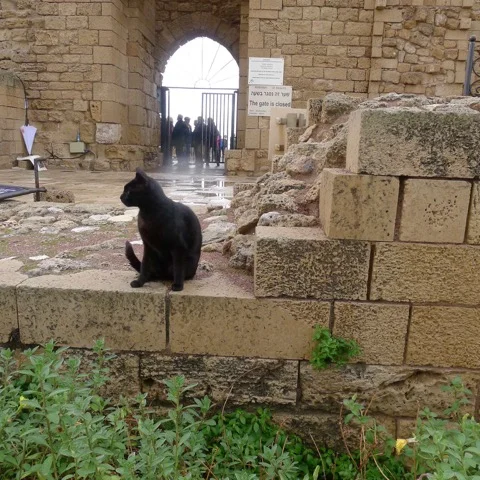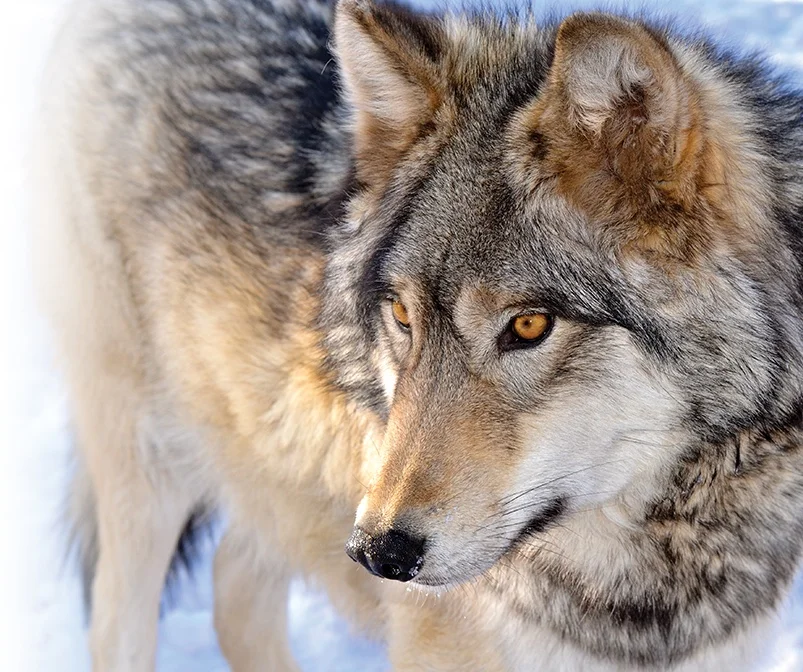Rewilding Our Narrative (Rev. Matt Syrdal)
My family lives in the high plains, on the front range of Denver, Colorado, about 1,300 miles from my childhood home. Yet the mystique of the Pacific Northwest still runs in my blood like salmon spawning the Nooksack river. The totemic animal imagery of the native tribes and the mythos of the Salish Sea still swims underneath the black waters of my waking consciousness. To this day, the Northwest conjures images, dreams and memories in a way I cannot explain.
As a boy of ten, I will always remember a sacred encounter with a large male orca, the elder of its pod, breaching right off the starboard side of our boat on a summer trip with my family. Its six foot tall dorsal fin rising silently, then descending, splitting the black surface of the Sound mere meters from my elated wind-drowned shouts. As this numinous image plunged back into the mysterious depths of my memory, it left an indelible mark on my soul — a wake of wildness rippling through the coastlands of my ripening identity — like a story that was waiting to be overheard so that it might one day be spoken in human tongue.
Childhood numinous experiences connect the outer wildness of an untamed world, teeming with the wondrous treasures of biodiversity, with our own inner wildness. A wildness that both mirrors, and is mirrored by, the deep world itself. Children who are raised with free time in nature exploring the outdoors will learn the magic of kinship with the more-than-human world. Our childhood imaginations effortlessly absorb whispers from this living world untamed by culture, untainted by the concerns and projects of our ‘civilized’ world.
From the primary forests to alpine lakes, from grey wolves to lichen, ‘wildness’ is simply the natural state or expression of any being or place in its spontaneous, primal and creative modalities. As Thomas Berry writes in The Great Work:
“Wildness we might consider as the root of the authentic spontaneities of any being. It is that wellspring of creativity whence come the instinctive activities that enable all living beings to obtain their food, to find shelter, to bring forth their young; to sing and dance and fly through the air and swim through the depths of the sea. This is the same inner tendency that evokes the insight of the poet, the skill of the artist, and the power of the shaman. Something in the wild depths of the human soul finds its fulfillment in the experience of nature’s violent moments.” (51)
The ‘wild’ is that which is pure, uncontrolled, unmanaged, untamed nature. By wildness we might assume there is something inherent in all natural systems: an original, primordial wisdom, a deeper pattern in all earth processes, bioregions and species — including the human — moving towards some mysterious, yet wild, equilibrium.
Thomas Berry sums up this distinction between the will to domesticate in a cultural consumer mindset of objectification and enterprise, with the greater urgency for our species to wildly belong as a ‘communion of subjects’. “We are not here to control. We are here to become integral with the larger Earth community.” (Great Work, 48)
Many scholars trace the ‘domestication’ of plants and animals, the birth of agriculture, to a hinge period between the Mesolithic and the Neolithic age from about 7000 BCE in the Middle East to about 5000 BCE in Mesoamerica. Dr. Sean Kane, in Mythtellers, explains how this hinge period brought about a sudden and “radically altered relationship between humans and plants and animals,” between humans and the earth itself (18). This relationship has become one of dominion over the land and domestication of the animal world, the development of agriculture by sedentary communities reflected in newer agricultural myths - hedging our bets by ritually appeasing particular sky and fertility dieties for the protection and abundance of crops, building fences around fields, harboring seeds to plant them at just the right time. The dawn of domestication brought unceasing toil shaped by fear and a attitude of resource-management or hoarding rather than abundance (Mythellers, 20). All these activities and the myths that were told put humanity in a state of contest with nature, transitioning humanity from a time when humans knew the speech of the land and animals, to a time of domestication when humans feared the wild world.
Wild Discipleship
The term ‘rewilding’, now a cultural meme, was first coined by activist and conservationist Dave Foreman, only appearing in print in 1990 in the work of conservation biologists Soule and Noss. Rewilding was developed as a way to preserve ecosystems in their functionality to reduce the loss of biodiversity, the effects of trophic cascades, the decline of large-scale wilderness areas, and the reestablishment of corridors of connectivity between them. One example of rewilding was the reintroduction of gray wolves, as apex predators, to Yellowstone National Park beginning in 1995. What if what is most needed today is a rewilding of those same institutions that have brought us to this moment of dangerous levels of domestication and destruction?
Those of us working in religious America today might remember that the basic principles of rewilding can be found in the Sabbath laws of Leviticus 25: “Every seventh year… shall be a year of solemn rest for the land…” Letting the land lie fallow, untilled, is to allow it to become undomesticated again. Letting the work animals rest, and letting the wild animals return, are all ways of letting the land return to its original state. The high theological value of Sabbath in the Torah proves that good theology is also good ecology. The relationship between working the land and resting the land is kept sacred. This rewilding principle goes all the way back to the beginning.
In the first creation account, the injunction of Elohim (the Israelite parallel to the Canaanite sky diety) for the human ones is to exercise dominion over the creation. Although dominion means something equivalent to exercising skilled mastery within the world as a partner in the unfolding of creation, bringing about a ripening of the awakening world to fruition, this word came to take on an exploitative power-over-against as the myth was enculturated into various empires. In the second creation account, Yahweh, the revealed God of Israel, is concerned primarily with the earth — the ground — adamah in the Hebrew. The human is “formed from the dust of the ground” and in-breathed with the breath of life (just as the “wild animals and birds in the sky” are “formed out of the ground” in verse 19). The vocation of the human is to cultivate and to serve the ground (the matrix) from which all biological diversity originates.
The key to our uniquely human role in the evolution of the universe seems to be in the power of our story-telling, meaning-making in the cultivation of the world — the power to tell ourselves stories about who we are, and what we really are, our ultimate place in the world. In the beginning was the Logos, the Word, the Singing, the living Story or Mythos actively creating meaning and life itself. Myth is the ecology of the soul and the world itself. As Kane explains, “myth is in effect a whole ecology holding itself in place in a part of the world, and expressing itself through the storytelling of local humanity.” (Mythtellers, 51) Myth in the oral form of passing on of stories from generation to generation—“take their inspiration, not from texts, temples or other monuments at the center of the human effort, but from the life of nature surrounding it.”
Myth emerges out of the matrix of both wild inner and outer nature. “mythtelling assumes that the stories already exist in nature, waiting to be overheard by humans who will listen for them. Such stories have a semi wild existence; they are just barely domesticated and so are free to enact the patterns of the natural world… an emotional and philosophical language of coevolution with nature, a language that allows all life, not just human life, to participate in the ecology of the earth.” (Mythtellers, 33)
As Moses says in Deuteronomy 30 “the word is very near you; it is in your mouth and in your heart so you may obey it. See, I have set before you today life and prosperity, death and destruction… this day I invoke the heavens and the earth as witnesses against you that I have set before you life and death, blessings and curses. Now choose life…” (vv. 14-19). To paraphrase, language has the power to domesticate and to rewild the soul of the community and the more-than-human community. In order to restore biodiversity on our planet, and enhance life for future generations of species including our own, it is important to become educated and involved in conservation efforts but it is not enough. Rewilding the Earth is to imaginatively and radically reconceive our identity and role as a species. We are now being called to rewild the very stories we tell ourselves about who we are, about what we are. We must choose to rewild the way.
As the Indigenous Messiah, Jesus was the One who listened deeply to the song of Creation, to the living dialogue that is in the beginning, at the very heart of the universe itself. Jesus was the myth teller of the community he was forming around his own ministry of power and healing - a new Israel. His parables of the kingdom of heaven where stories that have always existed, in the soul of the world, waiting to be heard, “whoever has ears, let them hear.”
###
Rev. Matthew Syrdal M.Div, is the Associate Pastor for Spiritual Formation at Grace Presbyterian Church in Highlands Ranch, Colorado, founder and lead guide of WilderSoul TM and Church of Lost Walls TM. Matt is a speaker, artist and writer who offers workshops, retreats and intensives in Celtic and indigenous Christian nature-based spirituality. Matt has completed training through Animas Valley Institute as a nature-based human development guide. WilderSoul partners with Seminary of the Wild in offering nature-based intensives designed to discover our deepest voice, our soul-rooted vocation, and to rewild discipleship in greater service to the world.
See Matt's other post on AllCreation, much acclaimed by fellow contributors: Worship As Wild Courtship.
Church of Lost Walls is a community partner of Wild Church Network in the Front Range mountains of Denver, Colorado. The dream of Church of Lost Walls is to participate in and partner with creation through learning, worship, meditation and prayer. Through nature-based practices that draw upon the wisdom of sacred narratives and older traditions, we seek to cultivate nature connection and personal wholeness to inspire and guide one another into a culturally creative vision of life within our expanding circles of community, culture, the wild earth, and the great mystery we call God. This culturally creative vision can be discovered in the depths of our unique Imago Dei (Gen 1), what poet David Whyte refers to as the “truth at the center of the image you were born with,” and Bill Plotkin refers to as the soul-image. In the teachings of Jesus, it is the “treasure hidden in the field.” The walls that divide and limit us become lost in the deep poetry of wild nature.






